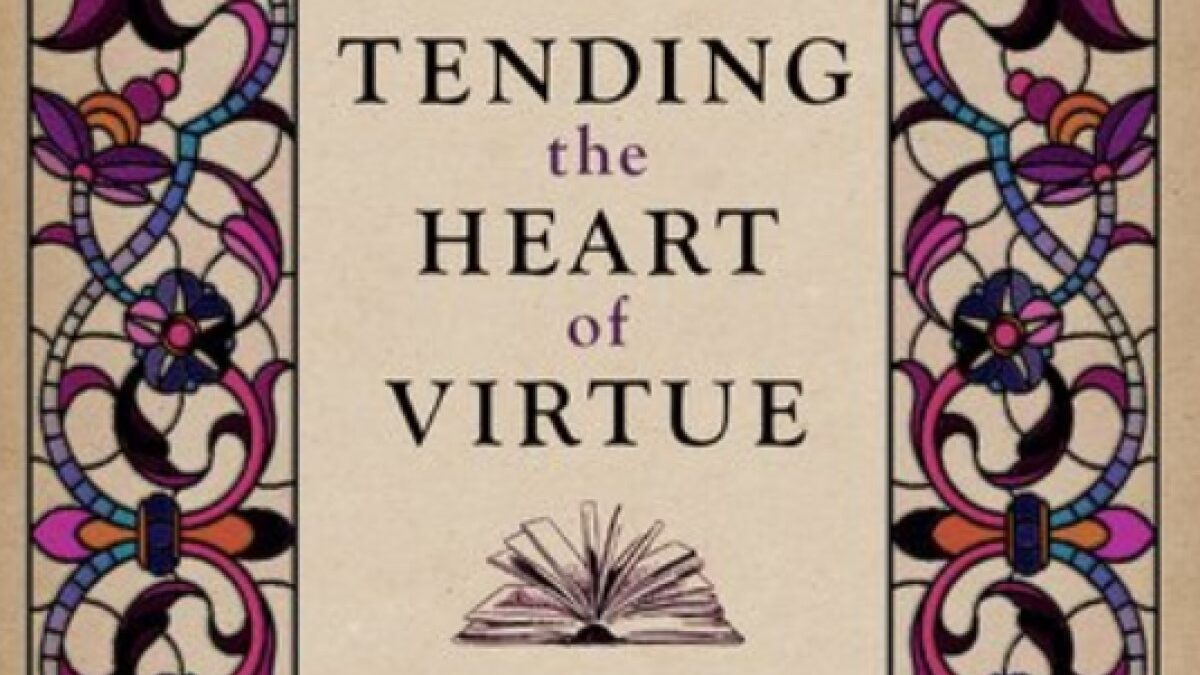
Aspiring authors are often coached on the “rules” that will help them publish a successful work of fiction. “Show, don’t tell,” is one of the golden maxims (a writer is supposed to show through her character’s actions that he is, say, grieved, or ravenous, or insane, instead of merely making a bald and lifeless statement to that effect). However, there are other, deeper, more powerful rules that storytellers heed instinctively. These unspoken laws legislate the way that writers talk about humanity, morality, the meaning of life, and even the nature of dragons. They also influence the reader’s willingness to suspect disbelief and enter the world of a story. The rules vary from culture to culture. Always present, they are typically invisible except through contrast with the stories of another land or era. Because they shape our approach to fiction, they often shape our perception of real life, as well.
Recently I read Jules Verne’s dramatic “20,000 Leagues Under the Sea,” a nineteenth-century tale of a learned French naturalist who finds himself aboard a futuristic submarine in company with a crew of men who have rejected civilization. The characters hike underwater mountains, view mysterious regions of the deeps, and ward off attacks from exotic forms of sea life. The perusal of this book left me repeatedly struck not just with a case of I-am-not-buying-into-this-improbable-event-in-your-plot, but with actual discomfort.
The author’s conception of future technology is often perceptive, but his era’s version of wholesome adventure is a little different from ours. Nowadays, when we talk about the astonishing creatures of the ocean, we are supposed to sound…. well, positive. Admiring. We aren’t supposed to judge them according to human standards of behavior or physical appearance, and to declare some of them (such as gigantic octopi) “monstrosities of nature,” or to decide that others (like sperm whales) are “mischievous creatures” who should be slaughtered in a “wholesome massacre” because of their supposed viciousness toward other, nicer whales. Our modern stories are supposed to focus on the danger that unrestrained humanity poses to the animals, not the danger that wild animals pose to humanity. To read about a scientist who says, “What a magnificent specimen of a rare creature! Quick, kill it!” feels downright awkward. I am no foe of hunting, but I am enough of a child of my era to experience unease when the fictional sea runs red with the blood of whales.
A Sea Change in Understood Morality
If Verne lived today, his “20,000 Leagues Under the Sea” would be different. That is because the rules about what makes a book morally acceptable have changed. Nowadays, even as we have become less sensitive about portraying certain types of human death (say, the teen-on-teen killings in “The Hunger Games”) we are startled if a piece of fiction speaks positively or even neutrally about the wholesale slaughter of animals. It is not that our society refuses to kill animals or that we are unaware that animals (whether hungry great white sharks, antisocial pit bulls, or aged tigers), sometimes endanger human life. It is merely that we have complex, unspoken rules about how these topics should be handled in literature, rules that flow from our cultural perceptions and priorities, and one of our rules is that we must mention human culpability and encroached habitat when talking about, say, wild animals who prey on human villagers. To do otherwise is just…. wrong.
The reasons behind our storytelling morality are easier to see when we look at more recent changes. I am currently reading the first tale in Ursula K. Le Guin’s “Tales from Earthsea” (a collection of novellas that intersect with her Earthsea fantasy novels). What fascinates me is the contrast between this story and the author’s first Earthsea novel from 1968 (in the forward to “Tales from Earthsea,” Le Guin acknowledges that the vast social changes in moral outlook have changed her own view and thus her stories).
The first Earthsea novel is called “A Wizard of Earthsea.” In it, a young man named Ged travels the difficult path to wizardry and self-knowledge. The story is unconventional in many ways that were, in their day, quite bold. For instance, although not all the book jacket illustrations reveal this, the hero and most of the characters are not white people. For another, instead of engaging in epic warfare (or any warfare at all) the hero endures a long quest that ultimately revolves around facing and accepting his mortality. It is a hero saga and a quest story with a counter-cultural, reflective atmosphere (and without any fair-haired maidens who require rescue).
Yet the book also uses storytelling structures that are no longer kosher in the world of modern fiction. For instance, it is assumed in this story that dragons must be conquered, because they are dragons, and if you don’t kill or defeat them, they will show up and eat your population. Just because that is what dragons do. Nowadays, the idea that any race, culture, or species is beyond redemption is no longer “in.” Nowadays, we don’t hold “wholesome massacres” to cut down the sperm whale population, and we don’t assume that the dragons’ side of the story is not just as legitimate as the human point of view. The newer “Tales from Earthsea” make it clear that the author’s views on dragon hunting have changed.
Is this a good thing, or a bad thing? Certainly, rejecting aggressive violence is good, as is a proper humility about our own ability to always know friend from foe. Yet I think the shift is also tied to a widespread, paralyzing relativism. It’s a funny thing—a healthy humility about our own virtue seems to have created a potentially dangerous disbelief in virtue itself and therefore in evil. We are no longer comfortable with the idea that anything is worth killing for (or dying for). We might feel differently if we did not live in a prosperous, safe, first-world society.
Stories about Men and Women Have Changed, Too
Even more dramatic is the gender situation. In Ged’s world, only males are wizards. The entire school of wizardry is male and males dominate magic. Most of the females who possess some magical arts are ignorant village witches. The only truly gifted witch-woman with whom Ged interacts fits right into old tropes by attempting to use her beauty to entrap him into slavery (meanwhile, she is also trying to trick and betray her cruel husband). Her Machiavellian efforts are her own undoing, and her end is bloody and brief. She is an interestingly vivid character (after all, she comes from the pen of Ursula Le Guin) and she adds to the story overall, but the message that seems to be provided by her life (“watch out for females who do magic”) clashes with modern desire for gender equality. Thus far in my reading of the newer “Tales from Earthsea,” it is men who make all the trouble with their arrogance, their desire to dominate, and their foolish distrust of the earthy, old-power-magic of women. It is men who fear female power and female sexuality, and women who can be counted on to maintain a proper perspective. One might conclude that the author is trying to apologize for her earlier sins against our modern rules.
Currently, we are hyper-sensitive to gender portrayals. Female characters, especially those who appear in action or adventure stories, are expected to provide a narrow type of role model by representing our society’s goal of genderless equality. They are not allowed to show certain types of human weakness, lest they suggest that all women are weak, and then perhaps the work of the suffragettes would be undone and all girls in America will fail math on the SAT. Often this leads to the “strong woman” character who routinely beats up males twice her size (even though she is far more likely to possess the build of a ballet dancer than that of a broken-nosed body-builder).
“Strong women” do not keep the farm running, mend soldier’s shirts, or endure foreign oppression in order to courageously raise the next generation. They are usually limited to taking on traditionally-male roles of a militant nature. Even the delightful character Valka (from “How to Train Your Dragon 2”) and the colorful Wyldstyle (from “The Lego Movie”) have been spoken of as moral-storytelling failures because, although they demonstrate action prowess, they allow a male lead to fight the final battle. As one critic of the stock “strong women characters” has pointed out, all the princesses know kung fu nowadays, and that is one of the ways in which they are all the same.
Such rigidity does not make for better, broader stories. Why do we submit to it? I think the answer reveals what storytelling laws are all about. Stories teach, transmit values, and bind a population into a culture. The rules that dictate how they portray life grow from the desire to communicate the beliefs that a culture most wishes to be true.
Refusing to Step Into Literature from Other Times Blinds Us to Ours
C.S. Lewis has pointed out the challenge of recognizing one’s own culture’s blind beliefs. “We may be sure that the characteristic blindness of the twentieth century—the blindness about which posterity will ask, ‘But how could they have thought that?’—lies where we have never suspected it…. None of us can fully escape this blindness, but we shall certainly increase it, and weaken our guard against it, if we read only modern books. Where they are true they will give us truths which we half knew already. Where they are false they will aggravate the error with which we are already dangerously ill.”
Like many nineteenth-century novels, “20,000 Leagues Under the Sea” speaks of honor in a distinctively nineteenth-century way. It is made clear that, had the protagonists been forced by their captor to swear not to attempt escape, they would have been bound by their oath. Which of us moderns would consider a vow of that nature to be binding? The period sense of honor required individuals to subordinate their own self-interest to an impractical idea. Such a choice does not come naturally. No wonder their culture pounded the population with constant reminders about the value of honor! It seems highly likely that the preeminence of honor was more common in fiction than in daily life, but its presence in fiction was helpful in preserving at least some of it in daily life. Likewise, a world in which the laws of physics suspend themselves for the sake of gender equality may not be strictly realistic, but it is a necessary trope for a culture that longs to move toward a certain ideal.
Most people are willing to “buy in” to fictional premises that do not jive with their experience of reality. The type of characters, plot twists, and leaps of fancy which a reader is willing to accept are strongly influenced by what he is used to finding in the stories of his culture. Today, readers can be expected to accept that a female character is routinely able to beat up trained male fighters. They can be expected to accept the idea that anyone who wants to win can do so, if they want it hard enough (actual training not required). They are used to rooting for individuals who pursue single-handed, lawless vendettas against villains. They do not question the idea that the only lawful reason to be married is for the sake of passionate, romantic love.
Does this mean that we all believe those things will happen in real life? Do the storytelling rules of our culture matter? Even though many of us claim that we can enjoy any Netflix show we like without being influenced by “just a story,” the power of stories is that they do not require intellectual assent to exert influence. They can affect our unconscious perception of what is normal, and that is powerful indeed. When the ACLU launched an online campaign last year urging that the fictional gay couple on ABC’s show “Modern Family” be given a wedding to raise awareness of homosexual marriage, they were engaging in an overt bid to influence our culture. Usually, however, the influence of stories is far more subtle, and comes not from any political agenda of the author but from our shared cultural assumptions. Thus camouflaged, they are practically impossible to identify. To finish the quote from C. S. Lewis:
“The only palliative is to keep the clean sea breeze of the centuries blowing through our minds, and this can be done only by reading old books. Not, of course, that there is any magic about the past. People were no cleverer then than they are now; they made as many mistakes as we. But not the same mistakes.”
Startling experiences with deep-sea submarines help us shake up our sense of normality and give us the opportunity to challenge the narratives of our own culture.









